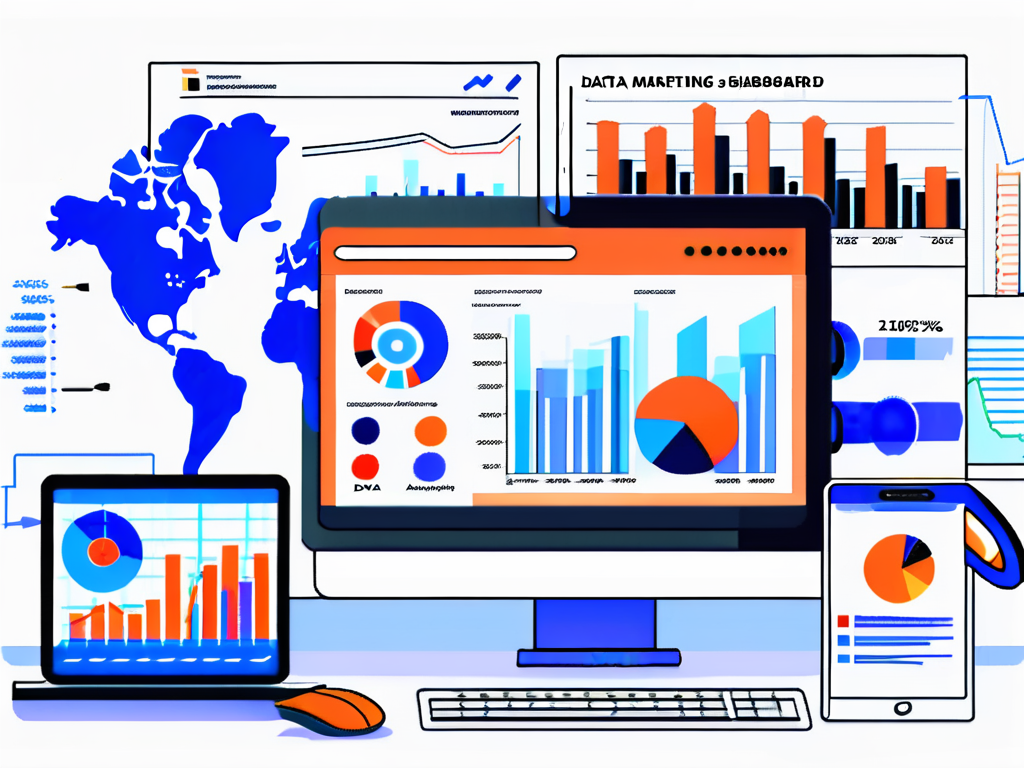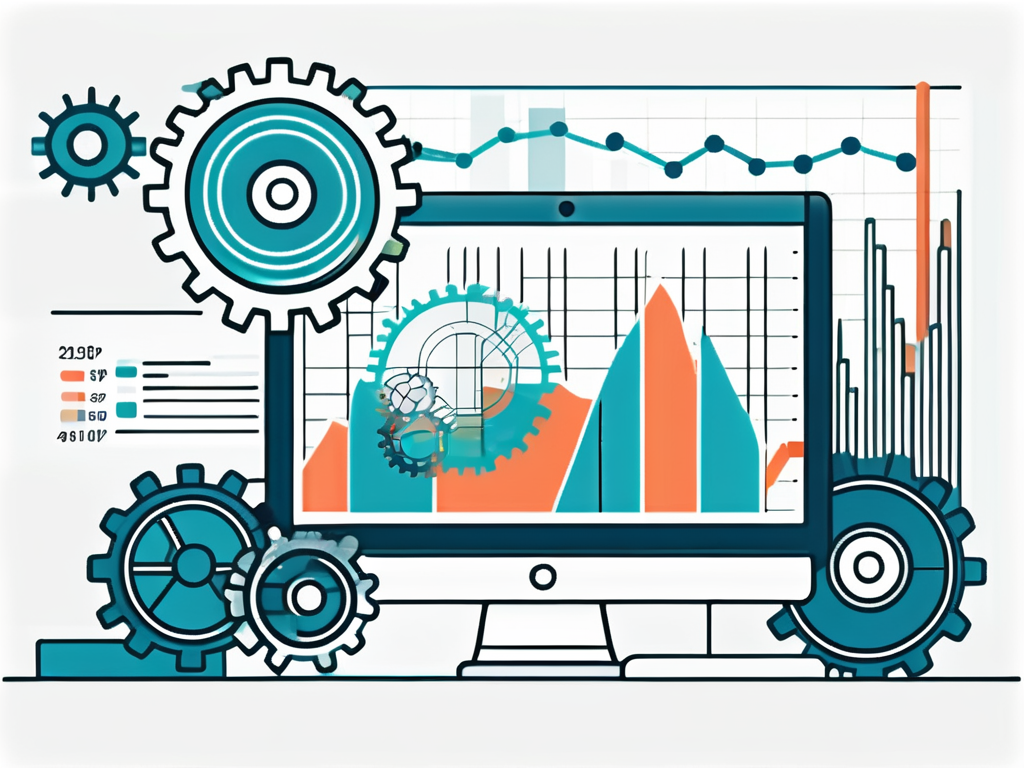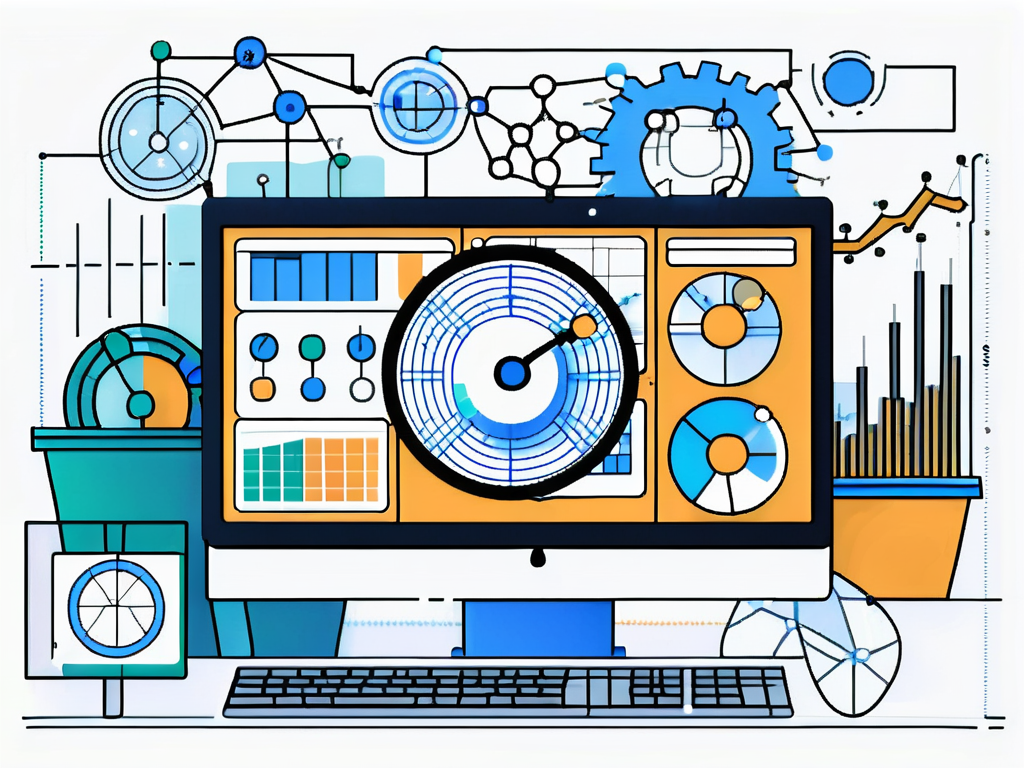In today’s digital age, data analysis has become an integral part of successful marketing strategies. With the vast amount of data available, marketers are able to gain valuable insights that can drive informed decision-making and ultimately improve business performance. However, manually analyzing and interpreting this data can be time-consuming and prone to errors. This is where automation comes in, streamlining the data analysis process and allowing marketers to focus on more strategic tasks. In this article, we will explore the importance of data analysis in marketing, the benefits of automating this process, different automation tools available, steps to automate your data analysis, maintaining and improving automated data analysis, and how to overcome challenges that may arise.
Understanding the Importance of Data Analysis in Marketing
As the saying goes, “knowledge is power,” and this rings especially true in marketing. Data analysis refers to the process of collecting, organizing, and interpreting data to discover meaningful patterns, trends, and insights. It enables marketers to better understand their target audience, monitor campaign performance, identify areas for improvement, and ultimately make informed decisions to drive business growth.

Data analysis plays a crucial role in modern marketing as it allows marketers to:
- Gain deep customer insights: By analyzing customer data, marketers can understand their target audience’s preferences, behaviors, and needs. This knowledge helps tailor marketing strategies and campaigns to better resonate with customers.
- Measure marketing effectiveness: Data analysis provides quantitative measures of marketing success. By tracking key performance indicators (KPIs), marketers can assess the impact of their campaigns, identify underperforming areas, and make data-driven optimizations.
- Identify market trends: Through data analysis, marketers can identify emerging market trends, detect shifts in consumer behavior, and adapt their strategies accordingly. This allows businesses to stay ahead of the competition and seize opportunities in the market.
The Role of Data in Modern Marketing
Data has become the lifeblood of modern marketing. It empowers marketers to navigate the dynamic and increasingly complex marketing landscape, enabling them to make informed decisions and drive business growth. With the ability to collect data from various sources such as customer interactions, website analytics, social media, and transaction records, marketers can gain a holistic view of their customers and make data-driven decisions to fuel marketing success.
Benefits of Automating Data Analysis
Automating data analysis offers numerous advantages over manual analysis. Let’s explore some of the key benefits:
- Efficiency and Time Savings: By automating data analysis, marketers can significantly reduce the time and effort required to process and analyze large volumes of data. This allows them to focus their time and energy on more strategic tasks, such as campaign planning and optimization.
- Accuracy and Consistency: Human errors are inevitable when analyzing large amounts of data manually. Automation minimizes the risk of errors and ensures consistent analysis across datasets.
- Actionable Insights: With automation tools, marketers can generate real-time insights from their data. This allows for quicker decision-making and the ability to respond promptly to shifting market dynamics.
- Scalability: As businesses grow and collect more data, automation tools can scale accordingly, accommodating larger datasets without sacrificing performance.
Exploring Different Automation Tools for Data Analysis
When it comes to automating data analysis, there are a variety of tools available in the market. However, choosing the right tool requires careful consideration of your specific needs and requirements. Let’s explore some key criteria to keep in mind when selecting a data analysis automation tool:
Criteria for Choosing the Right Automation Tool
Before diving into the options, consider the following factors:
- Functionality: Assess whether the tool provides the necessary features and capabilities to meet your data analysis requirements.
- Integrations: Ensure that the tool can seamlessly integrate with your existing data sources, such as customer relationship management (CRM) systems, analytics platforms, and database management systems.
- User-Friendliness: Look for a tool with an intuitive user interface and a short learning curve. This will enable your marketing team to quickly adopt and utilize the tool effectively.
- Data Security: Data security is paramount. Ensure that the tool adheres to industry-standard security protocols to protect your sensitive data.
- Support and Documentation: Check the availability of customer support and online documentation to assist with any technical issues or guidance needed during implementation and usage.
Overview of Popular Data Analysis Automation Tools
Here are some popular automation tools that can help streamline your data analysis process:
- Tool A: Tool A offers a wide range of functionalities, including data extraction, visualization, and advanced analytics. Its user-friendly interface allows marketers to easily explore and analyze their data.
- Tool B: Tool B focuses on providing comprehensive reporting and dashboard capabilities. It allows marketers to visualize their data and create customized reports to share with stakeholders.
- Tool C: Tool C specializes in data integration and cleansing. It enables marketers to combine data from various sources, cleanse and transform it, and create unified datasets for analysis.
Steps to Automate Your Data Analysis
Now that we understand the importance of data analysis, the benefits of automation, and the available tools, let’s dive into the steps to automate your data analysis:
Identifying Your Data Analysis Needs
Begin by clearly identifying your data analysis needs and objectives. Ask yourself:
- What are the key questions you want to answer through data analysis?
- What data sources do you need to access?
- What specific metrics and KPIs are important to track?
By clarifying your goals and requirements, you can narrow down the automation tool that best aligns with your needs.
Implementing Automation in Your Data Analysis Process
Once you have selected a suitable automation tool, follow these steps to implement automation in your data analysis process:
- Connect your data sources: Integrate your data sources with the automation tool to enable seamless data access and analysis.
- Define data workflows: Create workflows that outline the steps and processes required to transform raw data into actionable insights.
- Set up data visualization: Leverage the tool’s visualization capabilities to create interactive and insightful visual representations of your data.
- Automate data refresh: Set up regular data refreshes to ensure your analysis is based on up-to-date information. This can be automated to happen daily, weekly, or as frequently as needed.
- Validate and verify results: Thoroughly validate and verify the automated results against manual analysis to ensure accuracy and reliability.
Maintaining and Improving Your Automated Data Analysis
Automation is only the beginning. To truly reap the benefits of automated data analysis, ongoing maintenance and improvement are essential.

Regularly Reviewing and Updating Your Automation Process
As your business evolves and your data analysis needs change, it is important to regularly review and update your automation process. Periodically assess the performance of your automation tool, seek feedback from your team, and make necessary adjustments to optimize efficiency and accuracy.
Leveraging Automation for Continuous Improvement in Data Analysis
Use automation not just to streamline your data analysis process, but also to drive continuous improvement. Harness the power of automation by leveraging machine learning and predictive analytics to uncover deeper insights, identify new trends, and forecast future outcomes.
Overcoming Challenges in Automating Data Analysis
While automating data analysis offers many benefits, it is not without its challenges. Here are some common obstacles you may encounter and strategies to overcome them:

Common Obstacles in Data Analysis Automation
Some challenges you may face include:
- Data quality issues: Inaccurate or incomplete data can lead to erroneous analysis. Implement data cleansing and validation processes to ensure data integrity.
- Technical complexities: Implementing and managing automation tools can be complex. Provide training and support to your marketing team to effectively navigate the technical aspects.
- Resistance to change: Some team members may be resistant to embracing automation. Communicate the benefits of automation, address concerns, and provide guidance to facilitate a smooth transition.
Strategies for Overcoming Automation Challenges
To overcome these challenges, consider these strategies:
- Invest in data quality: Prioritize data quality by regularly auditing, cleansing, and validating your data. This ensures accurate and meaningful analysis.
- Provide comprehensive training: Equip your marketing team with the necessary skills and knowledge to effectively utilize the automation tools. Offer training sessions, workshops, and resources to support their learning.
- Champion change: Foster a culture of innovation and continuous improvement. Encourage open communication and collaboration, and recognize and celebrate successes achieved through automation.
Automating data analysis in marketing is not just a trend; it is becoming a necessity for businesses looking to stay competitive in today’s data-driven world. By understanding the importance of data analysis, leveraging automation tools, implementing automation steps, and overcoming challenges, marketers can unlock the power of data to drive strategic marketing decisions and fuel business growth.
FAQs
Q: Why should I automate data analysis in marketing?
A: Automating data analysis saves time and effort, improves accuracy, provides real-time insights, and enables scalability in handling large volumes of data. It allows marketers to focus on strategic tasks and make data-driven decisions to drive business growth.
Q: How do I choose the right automation tool for data analysis?
A: When choosing an automation tool, consider factors such as functionality, integrations, user-friendliness, data security, and the availability of support and documentation. Assess your specific needs and select a tool that aligns with those requirements.
Q: What steps should I follow to automate my data analysis?
A: First, identify your data analysis needs and objectives. Then, select a suitable automation tool based on those requirements. Implement automation by connecting your data sources, defining data workflows, setting up data visualization, and automating data refresh. Finally, validate and verify results for accuracy and reliability.
Q: How can I maintain and improve my automated data analysis?
A: Regularly review and update your automation process to adapt to changing needs. Seek feedback from your team, optimize efficiency and accuracy, and leverage automation to drive continuous improvement through advanced techniques like machine learning and predictive analytics.
Q: What challenges can arise when automating data analysis, and how can I overcome them?
A: Common challenges include data quality issues, technical complexities, and resistance to change. To overcome these, invest in data quality, provide comprehensive training to your team, and foster a culture of innovation and continuous improvement. Communication and addressing concerns are also vital for a smooth transition.
Ready to harness the full potential of your marketing data with expert guidance? Jonathan Prescott, a seasoned Chief Data Officer with a digital-first approach, is here to elevate your data analysis strategy. Contact us today to discover how our services can transform your business’s digital performance and drive growth.
